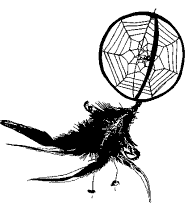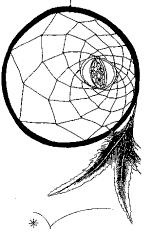The Native
American Holocaust -
Sex, Race and Holy War
- 5
In fact, no serious effort ever was made by the British
colonists or their ministers to convert the Indians to the Christian faith.
Nor were the Indians especially receptive to the token gestures that were
proffered: they were quite content with their peoples' ancient ways.' In
addition, it was not long before the English had outworn their welcome with
demands for more and more of the natives' ancestral lands. Failure of the
Indians to capitulate in either the sacred or the secular realms, however,
was to the English all the evidence they needed-indeed, all that they were
seeking- to prove that in their dangerous and possibly contaminating
bestiality the natives were an incorrigible and inferior race. But God was
making a place for his Christian children in this wilderness by slaying the
Indians with plagues of such destructive power that only in the Bible could
precedents for them be found. His divine message was too plain for
misinterpretation. And the fact that it fit so closely with the settlers'
material desires only made it all the more compelling. There was little hope
for these devil's helpers of the forest. God's desire, proved by his
unleashing wave upon wave of horrendous pestilence-and pestilence that
killed selectively only Indians-was a command to the saints to join his holy
war.
***
p240
Thomas Jefferson's first inaugural address delivered less than two centuries
since the founding of the first permanent English colonies:
A rising nation, spread over a wide and fruitful land,
traversing all the seas with the rich productions of their industry, engaged
in commerce with nations who feel power and forget right, advancing rapidly
to destinies beyond the reach of the mortal eye-when I contemplate these
transcendent objects, and see the honor, the happiness, and the hopes of
this beloved country committed to the issue, and the auspices of this day, I
shrink from the contemplation, and humble myself before the magnitude of the
undertaking.
It was in pursuit of these and other grand visions that Jefferson later
would write of the remaining Indians in America that the government was
obliged "now to pursue them to extermination, or drive them to new seats
beyond our reach." For the native peoples of Jefferson's "rising nation," of
his "beloved country"-far from being Bolivar's "legitimate owners"- were in
truth, most Americans believed, little more than dangerous wolves. Andrew
Jackson said this plainly in urging American troops to root out from their
"dens" and kill Indian women and their "whelps," adding in his second annual
message to Congress that while some people tended to grow "melancholy" over
the Indians' being driven by white Americans to their "tomb," an
understanding of "true philanthropy reconciles the mind to these
vicissitudes as it does to the extinction of one generation to make room for
another."
Before either Jefferson or Jackson, George Washington, the
father of the country, had said much the same thing: the Indians were wolves
and beasts who deserved nothing from the whites but "total ruin." And
Washington himself was only repeating what by then was a very traditional
observation. Less than a decade after the founding of the Massachusetts Bay
Colony in 1630, for example, it was made illegal to "shoot off a gun on any
unnecessary occasion, or at any game except an Indian or a wolf." As Barry
Lopez has noted, this was far from a single-incident comparison. So alike
did Indians and wolves appear to even the earliest land hungry New England
colonist that the colonist "fell to dealing with them in similar ways":
He set out poisoned meat for the wolf and gave the Indian
blankets infected with smallpox. He raided the wolf's den to dig out and
destroy the pups, and stole the Indian's children .... When he was accused
of butchery for killing wolves and Indians, he spun tales of Mohawk cruelty
and of wolves who ate fawns while they were still alive.... Indians and
wolves who later came into areas where there were no more of either were
called renegades. Wolves that lay around among the buffalo herds were called
loafer wolves and Indians that hung around the forts were called loafer
Indians.
As is so often the case, it was New England's religious elite
who made the point more graphically than anyone. Referring to some Indians
who had given offense to the colonists, the Reverend Cotton Mather wrote:
"Once you have but got the Track of those Ravenous howling Wolves, then
pursue them vigourously; Turn not back till they are consumed.... Beat them
small as the Dust before the Wind." Lest this be regarded as mere rhetoric,
empty of literal intent, consider that another of New England's most
esteemed religious leaders, the Reverend Solomon Stoddard, as late as 1703
formally proposed to the Massachusetts Governor that the colonists be given
the financial wherewithal to purchase and train large packs of dogs "to hunt
Indians as they do bears." There were relatively few Indians remaining alive
in New England by this time, but those few were too many for the likes of
Mather and Stoddard. "The dogs would be an extreme terror to the Indians,"
Stoddard wrote, adding that such "dogs would do a great deal of execution
upon the enemy and catch many an Indian that would be too light of foot for
us." Then, turning from his equating of native men and women and children
with bears deserving to be hunted down and destroyed, Stoddard became more
conventional in his imagery: "if the Indians were as other people," he
acknowledged, ". . . it might be looked upon as inhumane to pursue them in
such a manner"; but, in fact, the Indians were wolves, he said, "and are to
be dealt withal as wolves." For two hundred years to come Washington,
Jefferson, Jackson, and other leaders, representing the wishes of virtually
the entire white nation, followed these ministers' genocidal instructions
with great care. It was their Christian duty as well as their destiny.
***
p242
... when in 1492 the seal was broken on the membrane that for tens of
thousands of years had kept the residents of North and South America
isolated from the inhabitants of the earth's other inhabited continents, the
European adventurers and colonists who rushed through the breach were
representatives of a religious culture that was as theologically arrogant
and violence-justifying as any the world had ever seen. Nourished by a moral
history that despised the self and that regarded the body and things sensual
as evil, repulsive, and bestial, it was a culture whose holiest exemplars
not only sought out pain and degradation as the foundation of their faith,
but who simultaneously both feared and pursued what they regarded as the
dark terrors of the wilderness-the wilderness in the world outside as well
as the wilderness of the soul within. It was a faith that considered all
humanity in its natural state to be "sick, suffering, and helpless" because
its earliest mythical progenitors-who for a time had been the unclothed
inhabitants of an innocent Earthly Paradise-had succumbed to a sensual
temptation that was prohibited by a jealous and angry god, thereby
committing an "original sin" that thenceforth polluted the very essence of
every infant who had the poor luck to be born. Ghastly and disgusting as the
things of this world-including their own persons-were to these people, they
were certain of at least one thing: that their beliefs were absolute truth,
and that those who persisted in believing otherwise could not be tolerated.
For to tolerate evil was to encourage evil, and no sin was greater than
that. Moreover, if the flame of intolerance that these Christian saints lit
to purge humanity of those who persisted down a path of error became a
sacred conflagration in the form of a crusade or holy war-that was only so
much the better. Such holocausts themselves were part of God's divine plan,
after all, and perhaps even were harbingers of his Son's imminent Second
Coming.
It is impossible to know today how many of the very worldly
men who first crossed the Atlantic divide were piously ardent advocates of
this worldview, and how many merely unthinkingly accepted it as the
religious frame within which they pursued their avaricious quests for land
and wealth and power. Some were seeking souls. Most were craving treasure,
or land on which to settle. But whatever their individual levels of
theological consciousness, they encountered in this New World astonishing
numbers of beings who at first seemed to be the guardians of a latter-day
Eden, but who soon became for them the very picture of Satanic corruption.
And through it all, as with their treatment of Europe's Jews
for the preceding half-millennium-and as with their response to wildness and
wilderness since the earliest dawning of their faith-the Christian Europeans
continued to display a seemingly antithetical set of tendencies: revulsion
from the terror of pagan or heretical pollution and, simultaneously,
eagerness to make all the world's repulsive heretics and pagans into
followers of Christ. In its most benign racial manifestation, this was the
same inner prompting that drove missionaries to the ends of the earth to
Christianize people of color, but to insist that their new converts worship
in segregated churches. Beginning in the late eighteenth century in America,
this conflict of racial abhorrence and mission-and along with it a redefined
concept of holy war-became secularized in the form of an internally
contradictory political ideology. In the same way that the Protestant Ethic
was transformed into the Spirit of Capitalism, while the Christian right to
private property became justifiable in wholly secular terms, America as
Redeemer Nation became Imperial America, fulfilling its irresistible and
manifest destiny.
During the country's early national period this took the form
of declarations that America should withdraw from world affairs into moral
isolation (to preserve the chaste new nation from the depravities of the Old
World and the miserable lands beyond) that was uttered in the same breath as
the call to export the "Rising Glory of America," to bring democracy and
American-style civilization to less fortunate corners of the earth. Less
than a century later, during the peak era of American imperialism, the same
contradictory mission presented itself again: while those Americans who most
opposed expansion into the Philippines shared the imperialists' belief in
the nation's predestined right to rule the world, they resisted efforts to
annex a nation of "inferior" dark-skinned people largely because of fears
they had of racial contamination. Charles Francis Adams, Jr., said it most
straightforwardly when he referred to America's virulent treatment of the
Indians as the lesson to recall in all such cases, because, harsh though he
admitted such treatment was, it had "saved the Anglo-Saxon stock from being
a nation of half-breeds." In these few words were both a terrible echo of
past warrants for genocidal race war and a chilling anticipation of eugenic
justifications for genocide yet to come, for to this famous scion of
America's proudest family, the would-be extermination of an entire race of
people was preferable to the "pollution" of racial intermixture.
It was long before this time, however, that the notion of the
deserved and fated extermination of America's native peoples had become a
commonplace and secularized ideology. In 1784 a British visitor to America
observed that "white Americans have the most rancorous antipathy to the
whole race of Indians; nothing is more common than to hear them talk of
extirpating them totally from the face of the earth, men, women, and
children." And this visitor was not speaking only of the opinion of those
whites who lived on the frontier. Wrote the distinguished early nineteenth
century scientist, Samuel G. Morton: "The benevolent mind may regret the
inaptitude of the Indian for civilization," but the fact of the matter was
that the "structure of [the Indian's] mind appears to be different from that
of the white man, nor can the two harmonize in the social relations except
on the most limited scale." "Thenceforth," added Francis Parkman, the most
honored American historian of his time, the natives-whom he described as
"man, wolf, and devil all in one"-"were destined to melt and vanish before
the advancing waves of Anglo-American power, which now rolled westward
unchecked and unopposed." The Indian, he wrote, was in fact responsible for
his own destruction, for he "will not learn the arts of civilization, and he
and his forest must perish together."
But by this time it was not just the native peoples of
America who were being identified as the inevitable and proper victims of
genocidal providence and progress. In Australia, whose aboriginal population
had been in steep decline (from mass murder and disease) ever since the
arrival of the white man, it commonly was being said in scientific and
scholarly publications, that to the Aryan . . . apparently belong the
destinies of the future. The races whose institutions and inventions are
despotism, fetishism, and cannibalism-the races who rest content in . . .
placid sensuality and unprogressive decrepitude, can hardly hope to contend
permanently in the great struggle for existence with the noblest division of
the human species.... The survival of the fittest means that might-wisely
used-is right. And thus we invoke and remorselessly fulfill the inexorable
law of natural selection when exterminating the inferior Australian.
Meanwhile, by the 1860s, with only a remnant of America's
indigenous people still alive, in Hawaii the Reverend Rufus Anderson
surveyed the carnage that by then had reduced those islands' native
population by 90 percent or more, and he declined to see it as a tragedy;
the expected total die-off of the Hawaiian people was only natural, this
missionary said, somewhat equivalent to "the amputation of diseased members
of the body." Two decades later, in New Zealand, whose native Maori people
also had suffered a huge population collapse from introduced disease and
warfare with invading British armies, one A.K. Newman spoke for many whites
in that country when he observed that "taking all things into consideration,
the disappearance of the race is scarcely subject for much regret. They are
dying out in a quick, easy way, and are being supplanted by a superior
race."
Returning to America, the famed Harvard physician and social
commentator Oliver Wendell Holmes observed in 1855 that Indians were nothing
more than a "half-filled outline of humanity" whose "extermination" was the
necessary "solution of the problem of his relation to the white race."
Describing native peoples as "a sketch in red crayons of a rudimental
manhood," he added that it was only natural for the white man to "hate" the
Indian and to "hunt him down like the wild beasts of the forest, and so the
red-crayon sketch is rubbed out, and the canvas is ready for a picture of
manhood a little more like God's own image."
Two decades later, on the occasion of the nation's 1876
centennial celebration, the country's leading literary intellectual took
time out in an essay expressing his "thrill of patriotic pride" flatly to
advocate "the extermination of the red savages of the plains." Wrote William
Dean Howells to the influential readers of the Atlantic Monthly:
The red man, as he appears in effigy and in photograph in
this collection [at the Philadelphia Centennial Exposition], is a hideous
demon, whose malign traits can hardly inspire any emotion softer than
abhorrence. In blaming our Indian agents for malfeasance in office, perhaps
we do not sufficiently account for the demoralizing influence of merely
beholding those false and pitiless savage faces; moldy flour and corrupt
beef must seem altogether too good for them.
Not to be outdone by the most eminent historians, scientists,
and cultural critics of the previous generation, several decades later
still, America's leading psychologist and educator, G. Stanley Hall,
imperiously surveyed the human wreckage that Western exploration and
colonization had created across the globe, and wrote:
Never, perhaps, were lower races being extirpated as weeds in
the human garden, both by conscious and organic processes, so rapidly as
to-day. In many minds this is inevitable and not without justification. Pity
and sympathy, says Nietzsche, are now a disease, and we are summoned to rise
above morals and clear the world's stage for the survival of those who are
fittest because strongest.... The world will soon be overcrowded, and we
must begin to take selective agencies into our own hands. Primitive races
are either hopelessly decadent and moribund, or at best have demonstrated
their inability to domesticate or civilize themselves.
And not to be outdone by the exalted likes of Morton,
Parkman, Holmes, Howells, Adams, or Hall, the man who became America's first
truly twentieth century President, Theodore Roosevelt, added his opinion
that the extermination of the American Indians and the expropriation of
their lands "was as ultimately beneficial as it was inevitable. Such
conquests," he continued, "are sure to come when a masterful people, still
in its raw barbarian prime, finds itself face to face with the weaker and
wholly alien race which holds a coveted prize in its feeble grasp." It is
perhaps not surprising, then, that this beloved American hero and Nobel
Peace Prize recipient (who once happily remarked that "I don't go so far as
to think that the only good Indians are dead Indians, but I believe nine out
of ten are, and I shouldn't like to inquire too closely into the case of the
tenth") also believed that "degenerates" as well as "criminals . . . and
feeble-minded persons [should] be forbidden to leave offspring behind them."
The better classes of white Americans were being overwhelmed, he feared, by
"the unrestricted breeding" of inferior racial stocks, the "utterly
shiftless," and the "worthless."
These were sentiments, applied to others, that the world
would hear much of during the 1930s and 1940s. (Indeed, one well-known
scholar of the history of race and racism, Pierre L. van den Berghe, places
Roosevelt within an unholy triumvirate of the modern world's leading racist
statesmen; the other two, according to van den Berghe, are Adolf Hitler and
Hendrik Verwoerd, South Africa's original architect of apartheid.)'47 For
the "extirpation" of the "lower races" that Hall and Roosevelt were
celebrating drew its justification from the same updated version of the
Great Chain of Being that eventually inspired Nazi pseudoscience. Nothing
could be more evident than the fundamental agreement of both these men (and
countless others who preceded them) with the central moral principle
underlying that pseudoscience, as expressed by the man who has been called
Germany's "major prophet of political biology," Ernst Haeckel, when he wrote
that the "lower races"-Sepulveda's "homunculi" with few "vestiges of
humanity"; Mather's "ravenous howling wolves"; Holmes's "half-filled outline
of humanity"; Howells's "hideous demons"; Hall's "weeds in the human
garden"; Roosevelt's "weaker and wholly alien races"-were so fundamentally
different from the "civilized Europeans [that] we must, therefore, assign a
totally different value to their lives." Nor could anything be clearer, as
Robert Jay Lifton has pointed out in his exhaustive study of the psychology
of genocide, than that such thinking was nothing less than the "harsh,
apocalyptic, deadly rationality" that drove forward the perverse holy war of
the Nazi extermination campaign.
The first Europeans to visit the continents of North and
South America and the islands of the Caribbean, like the Nazis in Europe
after them, produced many volumes of grandiloquently racist apologia for the
genocidal holocaust they carried out. Not only were the "lower races" they
encountered in the New World dark and sinful, carnal and exotic, proud,
inhuman, un-Christian inhabitants of the nether territories of humanity-
contact with whom, by civilized people, threatened morally fatal
contamination-but God, as always, was on the Christians' side. And God's
desire, which became the Christians' marching orders, was that such
dangerous beasts and brutes must be annihilated.
Elie Wiesel is right: the road to Auschwitz was being paved
in the earliest days of Christendom. But another conclusion now is equally
evident: on the way to Auschwitz the road's pathway led straight through the
heart of the Indies and of North and South America.
[Elie Wiesel was a teenage inmate of Auschwitz but did not
report gas chambers in his Yiddish biography, Night. In his second edition
in French, he still did not remember anything about gas chambers. In his
third language edition in English he still did not remember gas chambers.
Finally, more than fifteen years after his first publication of his
Auschwitz memoirs he published in German his remembrances of gas chambers
just in time to join the Holocaust bandwagon that had made claims that had
not proven fruitful.
In the light of Auschwitz information emerging from the fall
of the Soviet Union, the death toll at Auschwitz was primarily due to
wartime deprivation that led to multiple outbreaks of typhus and the numbers
were less than 300,000. Even the plaque at Auschwitz was changed as far back
as 1990 downgrading the death toll from 4 million to 1.5 million. Further
research in the archives has reduced that number still further. As yet, no
documentary evidence or physical evidence has emerged to confirm genocide in
Nazi Germany although sufficient evidence has emerged about a post-war
genocide imposed by the Supreme Commander for Europe, General Dwight David
Eisenhower on German troops and their camp followers--estimates place the
German death toll at 1-1.7 million Germans.
Comparisons with real genocidal holocausts make the Zionist
attempts at holocaust claims seem self-serving.]
Sex, Race and Holy War
1 -
2 -
3 -
4 -
5
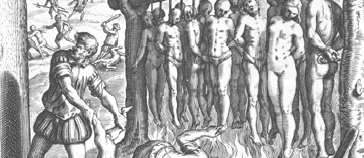

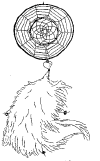

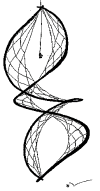




 Get
software to streamline your business and run it hands free.
Get
software to streamline your business and run it hands free.